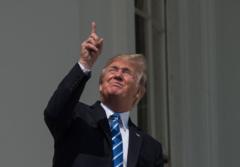In a recent post on his Truth Social platform, former President Donald Trump revealed his intent to abolish daylight saving time (DST), branding it "very costly" and "inconvenient" for Americans. Trump mentioned that while DST has a "small but strong constituency," it should be put to an end. He states that the Republican Party will work towards this goal, echoing sentiments held by many who find the time change cumbersome.
Daylight saving time involves adjusting clocks forward one hour in the spring and back in the fall to maximize daylight utilization. Currently, it’s practiced in approximately one-third of the globe, including most European countries. Nevertheless, the U.S. has seen a growing movement against this tradition. Advocates for standard time emphasize that more morning light benefits health, enhancing sleep patterns and morning routines.
Conversely, supporters of permanent DST argue that longer daylight evenings can decrease crime rates and encourage outdoor activities. This leads to an ongoing debate about which practice might boost the economy more effectively. Attempts to permanently change the system, like the proposed Sunshine Protection Act in 2022, have failed to gain traction, even with bipartisan support.
Historically, the U.S. adopted DST during World War One for fuel conservation but faced backlash from farmers, leading to its repeal post-war. It re-emerged during World War Two and became standardized in 1966. Today, Hawaii and most of Arizona don’t participate in clock changes. Studies, such as one by London School of Economics professor Joan Costa-i-Font, indicate DST negatively impacts sleep and well-being, potentially reducing overall economic output.
Countries like Mexico and Jordan have abandoned DST entirely, while nations such as Turkey and Russia have opted for a permanent version. Recent polling suggests that around two-thirds of Americans favor making daylight saving time permanent, heating up the conversation as Trump's administration looms.
Daylight saving time involves adjusting clocks forward one hour in the spring and back in the fall to maximize daylight utilization. Currently, it’s practiced in approximately one-third of the globe, including most European countries. Nevertheless, the U.S. has seen a growing movement against this tradition. Advocates for standard time emphasize that more morning light benefits health, enhancing sleep patterns and morning routines.
Conversely, supporters of permanent DST argue that longer daylight evenings can decrease crime rates and encourage outdoor activities. This leads to an ongoing debate about which practice might boost the economy more effectively. Attempts to permanently change the system, like the proposed Sunshine Protection Act in 2022, have failed to gain traction, even with bipartisan support.
Historically, the U.S. adopted DST during World War One for fuel conservation but faced backlash from farmers, leading to its repeal post-war. It re-emerged during World War Two and became standardized in 1966. Today, Hawaii and most of Arizona don’t participate in clock changes. Studies, such as one by London School of Economics professor Joan Costa-i-Font, indicate DST negatively impacts sleep and well-being, potentially reducing overall economic output.
Countries like Mexico and Jordan have abandoned DST entirely, while nations such as Turkey and Russia have opted for a permanent version. Recent polling suggests that around two-thirds of Americans favor making daylight saving time permanent, heating up the conversation as Trump's administration looms.






















